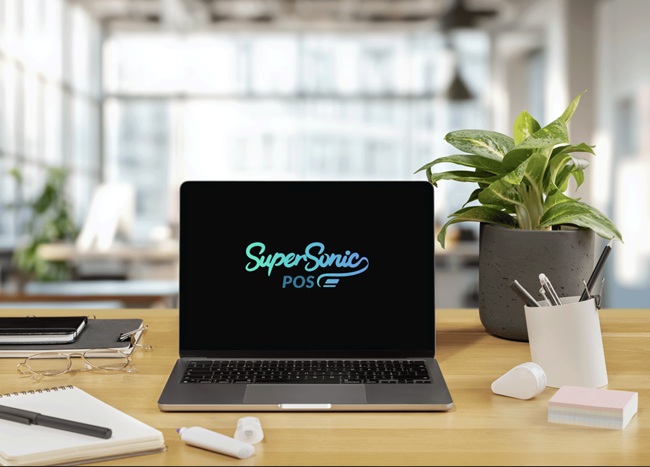Securing Your Legacy: Why Hiring an Expert Lawyer Is Essential
July 31, 2025Briannagh D and MC Lyte Bring Island Heat in “Realest Whine”
July 31, 2025
The latest smash-and-grab clips aren’t just racking up views — they’re sparking widespread changes in the back offices of America’s corner stores. From urban bodegas to highway gas stops, owners who once obsessed over lottery payouts and loyalty apps now ask a tougher question: How do I spot trouble before it empties a shelf or endangers a cashier?
That anxiety is driving a rapid — and surprisingly high-tech — arms race in the point-of-sale (POS) world, where software once built to ring up candy bars is being refashioned into a frontline security tool.
Retailers have good reason to panic. A National Retail Federation study released in January found shoplifting incidents rose 93 percent between 2019 and 2023, while dollar losses ballooned by 90 percent over the same period. Simply put, shrink is no longer a nuisance overhead line item; it’s a profit-killer that now arrives with a side of violence. Over 90 percent of retailers surveyed said thieves have become more aggressive — a statistic that convenience store managers feel each late shift.
Even city halls are scrambling. In May, New York City earmarked $1.6 million to equip 500 bodegas with silent buttons linked directly to the NYPD — a headline-grabbing move that positions emergency tech as essential infrastructure, not an optional upgrade — but most independents can’t wait for municipal grants. They need off-the-shelf tools that deter crime, summon help, and keep registers humming.
That urgency is reshaping what owners expect from POS vendors and opening the door for AI-centric players like SuperSonic POS to lead a broader “safety-by-design” movement.
Born behind the counter
SuperSonic POS’s story begins on Florida’s Gulf Coast, where software engineer Mahdi Hussein and his father, Mohammad, spent years running late-night gas stations and convenience stores. “If you’ve ever closed a register at 2:00 AM, you know how quickly an innocent question can turn into a security incident,” Hussein recalls. Early cloud POS suites treated those anxieties as bolt-on extras, so the duo wrote their own code — first as Petro Outlet in 2019, then as the fully vertical SuperSonic POS platform two years later.
Because the product was “written from behind the counter,” safety landed in the first sprint, not the feature wish list. Every SuperSonic POS register includes a press-and-hold “No Sale” function that silently pings police or pre-set contacts — no extra dongles or subscription tiers required. The feature rolled out weeks before New York’s panic-button announcement, underscoring how founder-led innovation can outrun city hall.
From panic buttons to predictive AI
Of course, a button that cries for help is only half a solution. The other half is preventing situations that force staff to hit it in the first place.
SuperSonic POS layers machine-learning models over every basket, shift, and SKU. If someone buys a $3 fountain drink, a $200 vape kit, and tries to refund lottery tickets — all on the same card during the graveyard shift — the system flags the odd pattern before the products walk out the door.
Hussein says an on-dashboard AI integration, due in beta later this year, will predict demand spikes, suggest staffing tweaks, and even recommend price changes to offload vulnerable high-shrink items quickly. “We want to hand owners an extra set of eyes, not another spreadsheet,” he notes.
The industry’s new R&D race
SuperSonic POS isn’t the only vendor chasing shrink with algorithms. Loss-prevention specialists now deploy computer vision that audits self-checkout lanes frame by frame, while suppliers like Diebold Nixdorf have launched AI modules that spot scan-avoidance and void fraud in real time. Convenience store analysts say retailers are hungry for unified suites that merge payment, inventory, and security data in one interface.
Yet cost remains the dividing line. While big-box chains can afford separate alarm systems, dedicated AI pilots, and roaming “asset-protection” teams, many independent operators cannot.
SuperSonic POS collapses panic buttons, fraud analytics, delivery integrations, and real-time inventory into a single SaaS fee that runs on standard smartphones and computers. That matters when the same person sweeping the floor is also reconciling yesterday’s cash drops.
Reputation and revenue on the line
Customers have noticed. A 2023 Deloitte report found that shoppers increasingly choose stores that advertise robust security and data-privacy measures — a brand perception once reserved for online checkout badges. Being able to tell patrons, “Our registers run AI fraud models and link directly to first responders,” can differentiate a neighborhood C-store as effectively as any buy-ten-get-one coffee card.
Looking ahead
SuperSonic POS’s roadmap reads less like a POS feature list and more like a Hollywood control room: invisible shelf cameras that reconcile sell-through in seconds, large-language-model copilots that answer, “How much shrink did we eat on aisle four last night?” and cross-register alerts that lock screens the moment a panic button fires.
For Hussein, that trajectory isn’t marketing spin. “Shrink is a moving target,” he says. “If the bad guys innovate, merchants need tech that iterates even faster.”
Debates about AI safety often orbit driverless cars and deepfakes, yet the most immediate, tangible battleground may be the unassuming terminal perched beside the gum rack. By embedding predictive analytics, real-time alerts, and silent-alarm hardware into a single, cloud-based interface, platforms like SuperSonic POS are tipping the scales back toward the independents who anchor Main Street commerce.
In the race against retail crime and data threats, the point of sale is quickly becoming the point of safety. The stores that upgrade now could find the smartest deterrent is the one staring back at every customer, receipt in hand
